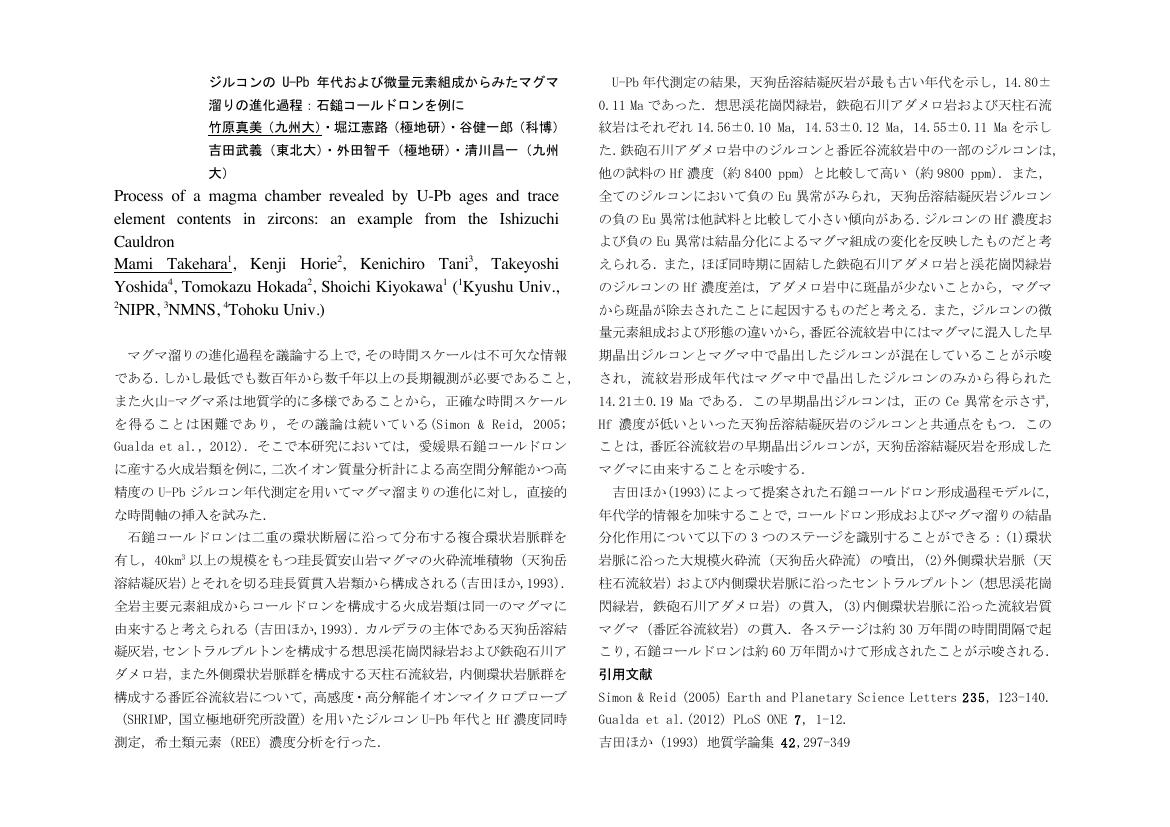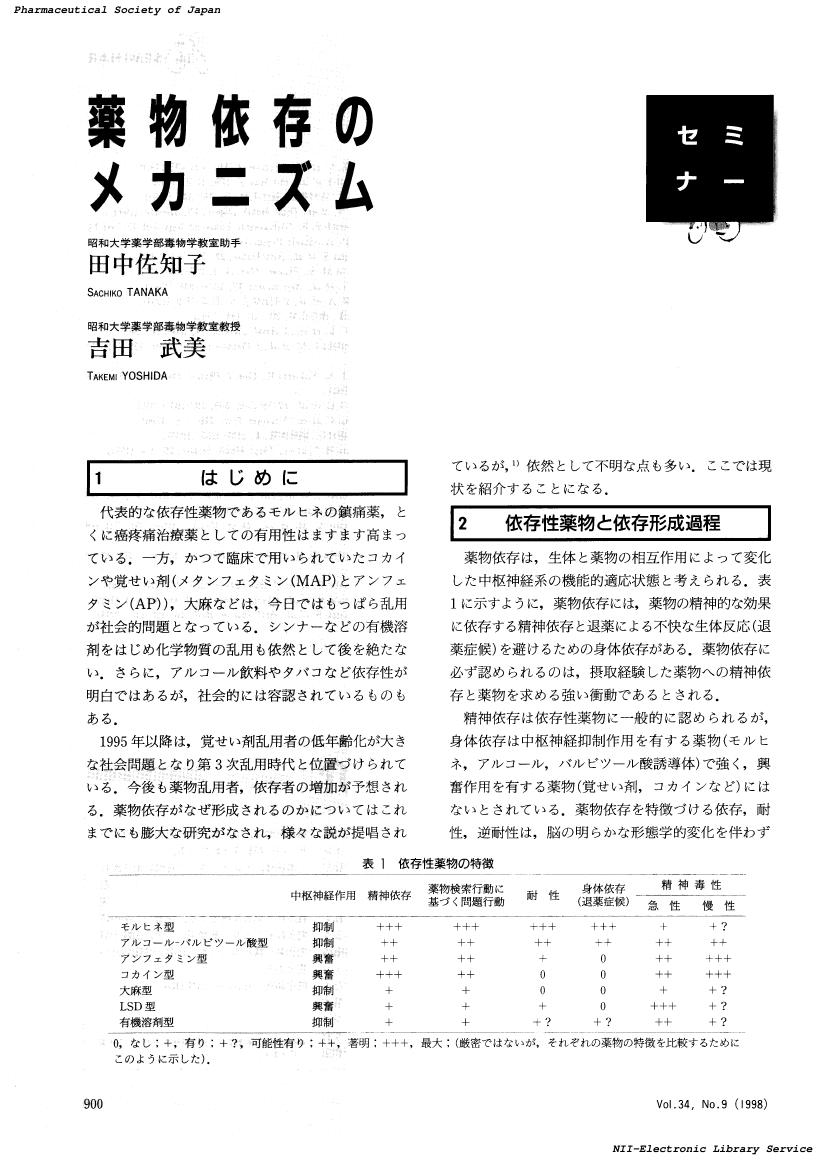16 0 0 0 OA 東北日本,朝日山地南縁に分布する中新統の地質と古地磁気および地殻回転時期
- 著者
- 星 博幸 山口 尚之 吉田 武義
- 出版者
- 一般社団法人 日本地質学会
- 雑誌
- 地質学雑誌 (ISSN:00167630)
- 巻号頁・発行日
- vol.129, no.1, pp.551-566, 2023-11-03 (Released:2023-11-03)
- 参考文献数
- 81
One of the tectonic features that characterizes the Miocene geology of Northeast Japan is crustal block rotation during and after the opening of the back-arc Sea of Japan. However, the spatial and temporal characteristics of this block rotation are not well understood. A better understanding of this block rotation would shed light on the Miocene tectonic evolution of Northeast Japan. We carried out geological mapping and geochronological and paleomagnetic analyses to determine the timing of block rotation on the southern margin of the Asahi Mountains, on the back-arc side of Northeast Japan. We present a geological map and chronostratigraphic model of the lower-middle Miocene strata and redefine two lower Miocene formations. K-Ar dates show that andesite dikes and sills were intruded at ~15 Ma. The crust beneath the study area was rotated counterclockwise relative to the Asian continent, although it was broken into blocks with varying degrees of rotation. In the eastern part of the study area, counterclockwise rotation of ~40°-50° relative to the continent occurred between 17.5 and 15 Ma. Rotation probably did not occur during the earlier development of intra-arc rift basins. The timing of the rotation overlaps with that of the formation of the Myozawa Syncline, which is a growth fold that formed during the deposition of shallow marine sediments during the latest early Miocene. Complex block rotation in a possible dextral transtensional regime in the Asahi Mountains was likely confined to a period of 2 Myr between 17 and 15 Ma. This block rotation probably occurred during the late stage of the opening of the back-arc Sea of Japan.
7 0 0 0 OA アメリカにおけるバリュールーブリックの動向
- 著者
- 吉田 武大
- 出版者
- 関西国際大学
- 雑誌
- 教育総合研究叢書 (ISSN:18829937)
- 巻号頁・発行日
- vol.4, pp.1-12, 2011-03-31
本稿では,アメリカにおけるバリュールーブリックの動向を紹介することを目的としている。目的の解明にあたり,AAC&Uのウェブサイトとバリュープロジェクトの関係スタッフの論考等を引用しながら,バリュールーブリック開発の背景,バリュープロジェクトとバリュールーブリックの概要を取り上げた。その結果,次の3点が明らかとなった。第1に,CLAやMAPPのような標準化されたテストでは学生の多面的な学習成果の評価が困難であることを受け,バリュールーブリックが開発された。第2に,バリュープロジェクトでは,多くの高等教育機関からの協力を得て,バリュールーブリックの開発が進められた。また,同プロジェクトは,学生の学習成果を評価する際に,eポートフォリオの活用を推奨している。第3に,バリュールーブリックは15種類作成されており,活用に際しては個々の機関・プログラム・授業の文脈に即して表現を書き換えることが求められている。
4 0 0 0 OA 化学の農業及び生理学への応用
4 0 0 0 OA 節薬バッグ運動 外来患者の残薬の現状とその有効活用による医療費削減の取組み
- 著者
- 小栁 香織 窪田 敏夫 小林 大介 木原 太郎 吉田 武夫 三井所 尊正 斎藤 友亮 打越 英恵 髙木 淳一 瀬尾 隆 島添 隆雄
- 出版者
- 公益社団法人 日本薬学会
- 雑誌
- YAKUGAKU ZASSHI (ISSN:00316903)
- 巻号頁・発行日
- vol.133, no.11, pp.1215-1221, 2013 (Released:2013-11-01)
- 参考文献数
- 16
- 被引用文献数
- 6 17
Pharmacists, being compensated through the new dispensing fee, are required to educate patients on their adhesion to the use of prescribed drugs, and to inventory the levels of leftover drugs in outpatients. Recently, Fukuoka City Pharmaceutical Association started a campaign for regulating leftover drugs (Setsuyaku Bag Campaign). Thirty-one pharmacies joined the campaign. Pharmacists distributed convenience bags, called ‘SETSUYAKU-BAG.’ The patients put their leftover drugs in the bags and brought them to community pharmacies. The pharmacists inventoried the returned drugs and reported their results to the doctors. The doctors adjusted the prescriptions accordingly. We counted and analyzed old and new inventories. The number of leftover drugs was 252, for a total value was ¥839655. Cost of leftover drug prescriptions could be reduced by ¥702695, and the value of drugs thrown away was ¥94801. In total, we could reduce the amount of leftover drugs by 83.7%. The cost of leftover drug for one dose package (ODP) is higher than that for non-ODP. However, there were no significant differences in results per age, sex, number and kinds of drugs, prescription days and premium contribution rate. These results suggest that prescription regulation by inventory of leftover drugs in community pharmacies could significantly reduce overall medical expenses. Further studies are necessary in order to account for patients’ health, and to establish more efficient patient education to raise outpatients’ adherence to the new programs.
4 0 0 0 OA 節薬バッグ運動 外来患者の残薬の現状とその有効活用による医療費削減の取組み
- 著者
- 小栁 香織 窪田 敏夫 小林 大介 木原 太郎 吉田 武雄 三井所 尊正 斎藤 友亮 打越 英恵 高木 淳一 瀬尾 隆 島添 隆雄
- 出版者
- 公益社団法人 日本薬学会
- 雑誌
- YAKUGAKU ZASSHI (ISSN:00316903)
- 巻号頁・発行日
- pp.13-00181, (Released:2013-08-23)
- 参考文献数
- 16
- 被引用文献数
- 6 17
Pharmacists, being compensated through the new dispensing fee, are required to educate patients on their adhesion to the use of prescribed drugs, and to inventory the levels of leftover drugs in outpatients. Recently, Fukuoka City Pharmaceutical Association started a campaign for regulating leftover drugs (Setsuyaku Bag Campaign). Thirty-one pharmacies joined the campaign. Pharmacists distributed convenience bags, called ‘SETSUYAKU-BAG.’ The patients put their leftover drugs in the bags and brought them to community pharmacies. The pharmacists inventoried the returned drugs and reported their results to the doctors. The doctors adjusted the prescriptions accordingly. We counted and analyzed old and new inventories. The number of leftover drugs was 252, for a total value was ¥839,655. Cost of leftover drug prescriptions could be reduced by ¥702,695, and the value of drugs thrown away was ¥94,801. In total, we could reduce the amount of leftover drugs by 83.7%. The cost of leftover drug for one dose package (ODP) is higher than that for non-ODP. However, there were no significant differences in results per age, sex, number and kinds of drugs, prescription days and premium contribution rate. These results suggest that prescription regulation by inventory of leftover drugs in community pharmacies could significantly reduce overall medical expenses. Further studies are necessary in order to account for patients' health, and to establish more efficient patient education to raise outpatients' adherence to the new programs.
3 0 0 0 OA 55B. 韓国,独火山島の岩石学(日本火山学会1986年度春季大会)
- 著者
- 金 允圭 吉田 武義 李 大声
- 出版者
- 特定非営利活動法人 日本火山学会
- 雑誌
- 火山.第2集 (ISSN:24330590)
- 巻号頁・発行日
- vol.31, no.2, pp.144-145, 1986-07-01 (Released:2018-02-13)
3 0 0 0 OA ICP質量分析法による微量元素定量分析
- 著者
- 木村 純一 土谷 信高 佐野 栄 中馬 教允 吉田 武義
- 出版者
- 一般社団法人日本地球化学会
- 雑誌
- 地球化学 (ISSN:03864073)
- 巻号頁・発行日
- vol.31, no.3, pp.133-151, 1997-08-04 (Released:2016-12-21)
- 参考文献数
- 99
- 被引用文献数
- 2
Recent advances in inductively coupled plasma source-mass spectrometry (ICP-MS) has enabled us to determine trace and ultra-trace elements contained in various geochemical samples. Due to the high sensitivity and rapid mass scanning features of ICP-MS, multiple element analysis for trace elements can be performed without any pre-concentration procedure. The high sensitivity also permits direct spot analysis of solid geochemicl samples using laser ablation (LA) or laser probe (LP) sampling techniques. Spatial resolution as fine as 5-15μm has been achieved in the LP system. However, despite the great analytical ability of ICP-MS, some care should be taken in quantitative analyses. Spectroscopic interferences such as oxide molecular ions (MO+), doubly charged ions (M++), and polyatomic ions (i. e., ArX+) affect the accuracy of measurements for the certain elements.Non-spectroscopic interferences, known as the matrix effect, also affect the analytical accuracy. There are two causes of the matrix effect: one originates in the plasma equilibrium and the other is the mass discrimination effect in an ion beam known as the "space charge effect". Differences in both the major chemical composition and introduction volume of analyte shift the aspect of the matrix effect. In order to attain high precision and accuracy in the analysis, optimization of the facility setting and analytical procedure is required to minimize those interferences. The problem in LA analysis is elemental fractionation mainly due to thermal heating of the sampling site during the laser ablation. This paper presents the facilities, functions, and analytical techniques of ICP-MS. Actual examples of terrestrial water analysis, rock analysis using solution samples, and micro analysis of minerals and bulk-rock analysis using LA-ICP-MS are also presented in this paper.
- 著者
- 竹原 真美 堀江 憲路 谷 健一郎 吉田 武義 外田 智千 清川 昌一
- 出版者
- The Geological Society of Japan
- 雑誌
- 日本地質学会学術大会講演要旨 (ISSN:13483935)
- 巻号頁・発行日
- pp.111, 2014 (Released:2015-03-16)
2 0 0 0 OA シュタイナーの教育方法論の特質 発達観との関係を中心として
- 著者
- 吉田 武男
- 出版者
- 一般社団法人 日本教育学会
- 雑誌
- 教育学研究 (ISSN:03873161)
- 巻号頁・発行日
- vol.54, no.2, pp.156-165, 1987-06-30 (Released:2009-01-13)
- 参考文献数
- 43
2 0 0 0 OA 「キー・コンピテンシー」に基づく学習指導法のモデル開発に関する研究
2 0 0 0 OA 「国有財産の有効活用に関する報告書」について
2 0 0 0 OA アメリカにおけるバリュールーブリックの活用動向
- 著者
- 吉田 武大 Takehiro YOSHIDA
- 雑誌
- 教育総合研究叢書
- 巻号頁・発行日
- vol.5, pp.103-111, 2012-03-31
本稿では,アメリカにおけるバリュールーブリックの活用動向について,実践事例の紹介を通じて明らかにすることを目的としている。検討の結果,次の5点が明らかとなった。第1に,評価規準を作成する際に,客観的な表現を使用したということである。第2に,評価の観点で示された能力を身につけていない評価基準としてレベル0を設定したことである。第3に,学士課程教育段階の学生に通常想定される能力を超えるような評価規準を設定しないということである。第4に,個々の授業のねらい等に応じて評価の観点の一部を見直したということである。そして第5に,これらの4点を踏まえ,授業で使用する学習教材それぞれについて,事前に評価の観点を細かく設定することで,書き換えたバリュールーブリックを活用する意義がより明確になるということである。
2 0 0 0 OA アメリカにおけるバリュールーブリックの動向
- 著者
- 吉田 武大 Takehiro YOSHIDA
- 雑誌
- 教育総合研究叢書
- 巻号頁・発行日
- vol.4, pp.2013/01/120:00:00, 2011-03-31
本稿では,アメリカにおけるバリュールーブリックの動向を紹介することを目的としている。目的の解明にあたり,AAC&Uのウェブサイトとバリュープロジェクトの関係スタッフの論考等を引用しながら,バリュールーブリック開発の背景,バリュープロジェクトとバリュールーブリックの概要を取り上げた。その結果,次の3点が明らかとなった。第1に,CLAやMAPPのような標準化されたテストでは学生の多面的な学習成果の評価が困難であることを受け,バリュールーブリックが開発された。第2に,バリュープロジェクトでは,多くの高等教育機関からの協力を得て,バリュールーブリックの開発が進められた。また,同プロジェクトは,学生の学習成果を評価する際に,eポートフォリオの活用を推奨している。第3に,バリュールーブリックは15種類作成されており,活用に際しては個々の機関・プログラム・授業の文脈に即して表現を書き換えることが求められている。
2 0 0 0 IR アメリカにおけるバリュールーブリックの活用動向
- 著者
- 吉田 武大
- 出版者
- 関西国際大学
- 雑誌
- 教育総合研究叢書 (ISSN:18829937)
- 巻号頁・発行日
- no.5, pp.103-111, 2012-03
本稿では,アメリカにおけるバリュールーブリックの活用動向について,実践事例の紹介を通じて明らかにすることを目的としている。検討の結果,次の5点が明らかとなった。第1に,評価規準を作成する際に,客観的な表現を使用したということである。第2に,評価の観点で示された能力を身につけていない評価基準としてレベル0を設定したことである。第3に,学士課程教育段階の学生に通常想定される能力を超えるような評価規準を設定しないということである。第4に,個々の授業のねらい等に応じて評価の観点の一部を見直したということである。そして第5に,これらの4点を踏まえ,授業で使用する学習教材それぞれについて,事前に評価の観点を細かく設定することで,書き換えたバリュールーブリックを活用する意義がより明確になるということである。
1 0 0 0 OA ホリスティックな立場からの教材・授業開発に関する研究
ホリスティックな立場からの教材・授業開発の視点を研究した。垣内松三の形象と自証体系の理論とそれを授業で具体化した青木照明の「融合読み」の研究を行った。垣内松三は、文字の連なりの奥にある人間の相(象徴)の存在を強調した。読むとは、この象徴を直観し、それを言葉という形で記号化する行為である。ここから垣内は、直観ー自証ー証自証、という読みの理論を体系化した。この理論を授業場面で具体化したのが芦田恵之助である。また、最近では、小学校国語の文学教材の読みの授業で、青木照明が行っている。青木の授業では、児童が物語文を読んで、直観したことを自分の言葉で解釈し、自証していく様子を確認できた。
1 0 0 0 Cyp2b10プロモーターに存在する抑制調節領域の可能性
- 著者
- 進藤 佐和子 沼澤 聡 吉田 武美
- 出版者
- 日本薬物動態学会
- 雑誌
- 日本薬物動態学会年会講演要旨集
- 巻号頁・発行日
- vol.24, pp.272, 2009
- 著者
- 長橋 良隆 小林 聡子 奥平 敬元 吉川 周作 吉田 武義 里口 保文
- 出版者
- 特定非営利活動法人 日本火山学会
- 雑誌
- 日本火山学会講演予稿集 (ISSN:24335320)
- 巻号頁・発行日
- vol.2006, 2006
1 0 0 0 OA 薬物依存のメカニズム
- 著者
- 田中 佐知子 吉田 武美
- 出版者
- 公益社団法人 日本薬学会
- 雑誌
- ファルマシア (ISSN:00148601)
- 巻号頁・発行日
- vol.34, no.9, pp.900-904, 1998-09-01 (Released:2018-08-26)
- 参考文献数
- 19
1 0 0 0 OA 日本の耕地 その特色と生産力
- 著者
- 吉田 武彦
- 出版者
- 公益社団法人 日本農芸化学会
- 雑誌
- 化学と生物 (ISSN:0453073X)
- 巻号頁・発行日
- vol.23, no.5, pp.337-344, 1985-05-25 (Released:2009-05-25)
- 参考文献数
- 10





